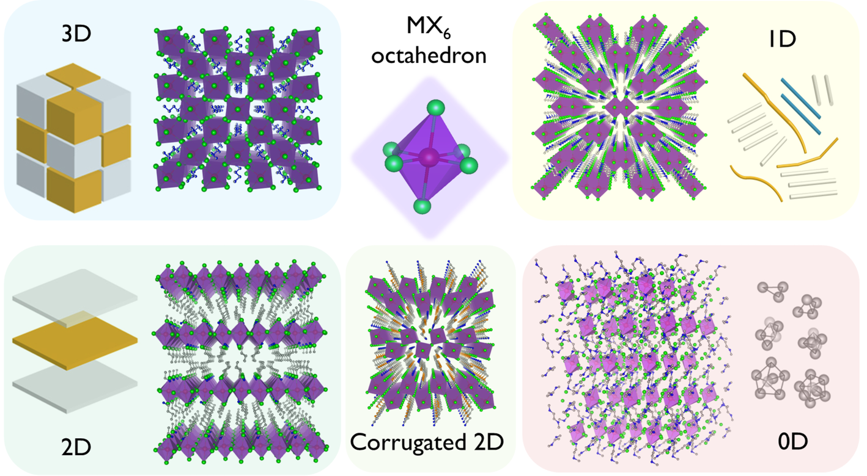
Organic-inorganic metal halide hybrids have received tremendous attention for their unique optical and electronic properties with applications in a variety of optoelectronic devices, from photovoltaic cells to light emitting diodes, photodetectors, and lasers. The exceptional structural flexibility of this class of materials enables the formation of various types of crystal structures using appropriate organic and inorganic components, ranging from three- (3D), to two- (2D), one- (1D), and zero-dimensional (0D) structures. The integration of useful functionalities from both organic and inorganic realms within a single hybrid bulk assembly affords diverse unique chemical and physical properties, with strong dependence on the structure and composition. In spite of a great deal of work conducted on various types of hybrid organic inorganic metal halide perovskites, synthetic control of the crystallographic structures of metal halide perovskites has not reached the same level as conventional organic and inorganic semiconductors yet. The knowledge and understanding of this class of hybrid materials, especially the properties beyond photovoltaics, are still very limited with a number of unanswered questions. Moreover, the research focus to date has been mainly on 3D and 2D structures containing layer(s) of corner sharing metal halide octahedrons, with little done in 1D structures (the metal halide octahedrons connected in a chain at the corners, edges, or faces) and 0D structures (the metal halide octahedrons completely isolated from each other). Since 2014, our research has been focusing on developing and studying organic-inorganic metal halide hybrids, which is distinct from existing programs in metal halide perovskite materials and devices (mainly on 3D and 2D structures) by concentrating on developing new synthesis approaches to obtain organic-inorganic metal halide hybrids with desired structural dimensionalities (with focus on new 3D, Corrugated-2D, 1D, and 0D structures) and properties in a rational manner, and gain a fundamental understanding of the physical phenomena that underpin structure-property relationships, as well as crystallization mechanisms, including nucleation, growth, and potential phase transitions. Our multidisciplinary study at a level beyond the state-of-the-art will (i) further advance research in organic-inorganic metal halide hybrids with controlled dimensionalities, from 3D to 2D, 1D, and 0D structures; (ii) gain a comprehensive understanding of their structure-property relationships, and (iii) realize the full potentials of organic-inorganic metal halide hybrids.
